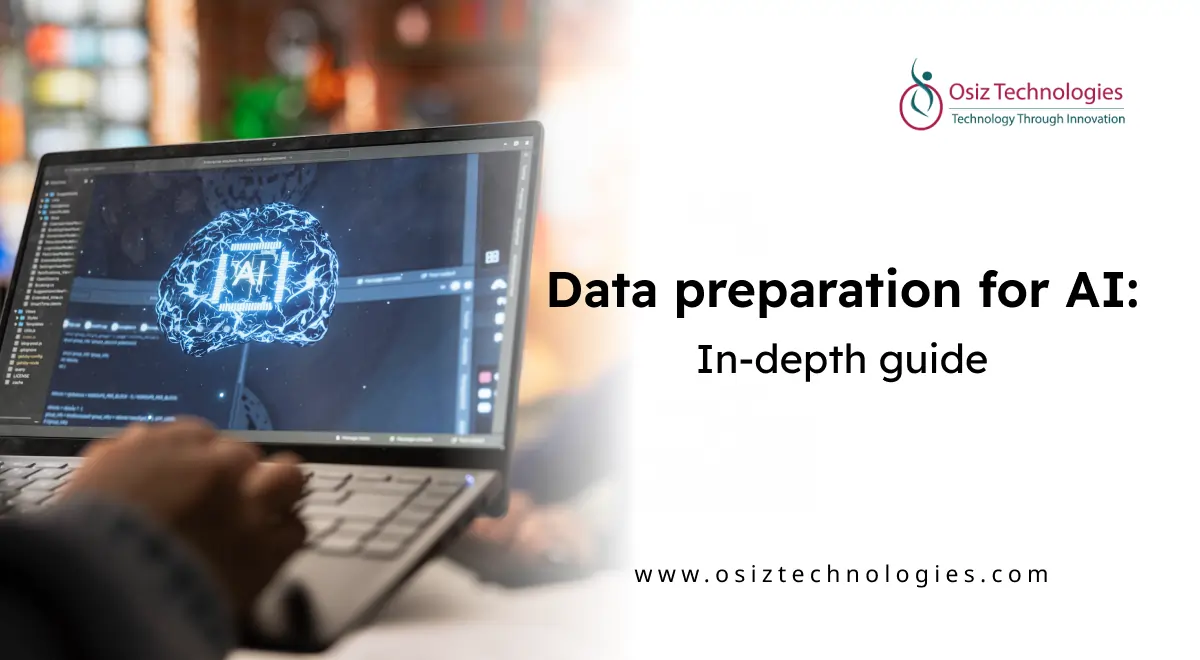Effective processing of documents is key. The handling of old documents takes ages, is prone to human errors, and requires high manpower. Artificial Intelligence, transforming document management towards an era known as Intelligent Document Processing (IDP). It's now possible with AI-powered capabilities that have allowed businesses to automate all their workflows related to documents. AI makes companies achieve accelerated decision-making, save time, and lower operational expenses on reduced error rates.
This extensive blog post discusses how AI-driven IDP functions, its benefits, the technologies driving it, and steps to implement it.
What is Intelligent Document Processing?
Intelligent Document Processing refers to the applications of AI, including machine learning, NLP, OCR, and robotic process automation, for extracting, analyzing, classifying, and managing data from structured and unstructured documents. Unlike traditional automation, it has a layer of intelligence due to its understanding of the context of data within a document. It can be applied to many industries and use cases.
How IDP Works?
IDP uses a sequence of sophisticated processes to make document handling and data extraction easier. Here's how it works:
Pre-Processing:
Improves the quality of scanned or uploaded documents using image processing techniques such as noise reduction, de-skewing, and layout correction.
This ensures that OCR and AI models perform well even with poor-quality inputs.
Document Classification:
Contains NLP and machine learning capabilities to classify documents by their content such as invoices, contracts, and forms.
Classification ensures that the routing and prioritization of documents in the workflows is easy and efficient.
Data Extraction:
Extracts specific data points, including names, dates, amounts, addresses, etc., with AI-powered models.
Easily works with structured data such as spreadsheets and unstructured data like email and PDF.
Validation:
Uses domain-specific rules and RPA to cross-validate the accuracy and compliance of extracted data.
Ensures high-quality data and raises anomalies for review
Human-in-the-Loop (HITL):
Data review, either uncertain or flagged, to improve the AI model's training
This hybrid approach ensures high accuracy. While allowing the AI to learn and evolve over time
Integration and Automation:
Processed data is fed into existing business systems such as CRM, ERP, and databases to make possible workflow automation.
Allow for the end-to-end digitization of document-driven processes.
Intelligent Document Processing Key Benefits
The adoption of IDP introduces a plethora of benefits, which include:
1. Improved Accuracy
The contextual interpretation and pattern recognition of AI ensures that data is retrieved and classified properly, hence minimizing human mistakes and improving decision-making.
2. Improving Efficiency
Repetitive document work tasks are automated with IDP, saving valuable time for workers to focus more on activities like strategic planning and customer engagement.
3. Decreased Cost
With the complete elimination of human error in data entry and error correction, IDP decreases operational costs while maximizing productivity.
4. Simplified Reporting
NLP algorithms generate automated summaries and insights, enabling faster and more informed reporting and analysis.
5. Improved Security
AI monitors access patterns, detects anomalies, and ensures sensitive information is handled securely, reducing the risks of data breaches.
6. Adaptive Learning
IDP systems improve continuously through exposure to new data, feedback, and edge cases, making them more robust over time.
7. Workflow Optimization
AI detects document workflow inefficiencies and provides optimization recommendations, creating smoother operations between departments.
Emerging Technologies Driving IDP
IDP's strength is derived from its innovative use of technology. The following are some key enablers:
Generative AI:
Generates summaries, drafts, and personalized responses based on the context of the documents and the intent of the user.
Optical Character Recognition (OCR):
Converts images of text, such as scanned documents, to machine-readable formats, creating the basis of data extraction.
Intelligent Character Recognition (ICR):
Expands OCR on handwritten and cursive text, improving usability for legacy and non-digital records.
Deep Learning Models:
Processes complex layouts of the document and numerous languages. Multilingual, multifaceted, and large documents can be processed accurately
Robotic Process Automation:
Repetitive jobs such as data entry, validation, and routing increase efficiency further
Semantic Analysis and Text Mining:
Analyses the tone and intent by extracting deeper insights regarding document sentiment that unlocks value in unstructured data
Intelligent Document Processing Use Cases
IDP is applicable across a broad spectrum of sectors:
-
Banking and Finance: Automated loan processing, compliance checks, and fraud detection.
-
Healthcare: Digitizing patient records, medical billing, and insurance claims.
-
Legal: Contract analysis, case management, and compliance documentation.
-
Retail: Invoices processing, order management, and inventory documentation.
-
Manufacturing: Supplier onboarding, quality assurance reports, and regulatory documentation
Implementation Steps for AI-Powered Document Processing
The setting up of an IDP solution involves planning. Here's a checklist:
Define Objectives:
Articulate goals and uses, including the automation of invoice processing, easy review of contracts, or optimized onboarding processes for customers.
Assess Current Systems
Analyze existing business workflows and tools to find gaps and areas of inefficiency where AI can improve performance.
Select AI Technologies
Choose the relevant technologies (OCR, NLP, ML, etc.) based on document complexity, volume, and workflow requirements.
Prepare Data
Collect a diverse and high-quality set of data to train AI models, enabling accurate results across different document types
Deploy Pilot Projects
Test IDP solutions at a small scale to validate their performance, collect user feedback, and fine-tune your models.
Integrate with Business Systems
Ensure smooth integration with all existing systems such as ERPs, CRMs, and document management platforms to maximize utility.
Iterate and Scale
Continuously improve AI models using feedback and scale solutions across departments for broader impact.
Future Trends in Intelligent Document Processing
Technology is advancing, and IDP will become even more sophisticated. The key trends are:
-
Edge AI: Real-time document processing at the edge for faster decision-making.
-
Blockchain Integration: Ensuring the authenticity and traceability of the documents.
-
Multimodal AI: Combining text, images, and other data formats for richer insights.
-
Zero-Shot Learning: Enabling AI models to handle unseen document types without extensive retraining.
Conclusion
The power of AI and its use in intelligent document processing is revolutionizing how organizations process documents. As of today, this function enables companies to operate much more efficiently and accurately and even to be adaptable within all organizational workflows.
Adopting AI-driven IDP, therefore, becomes more of a necessity for organizations wishing to venture into digital transformation. It's about ascertaining your specific needs and getting the right tools for implementing flawless integration into daily workflows. As AI advances and progresses further, the possibility of driving operational excellence with the use of IDP will come out with smarter, more agile business options. Partner with Osiz, the leading AI development company for intelligent AI solutions
Listen To The Article
Recent Blogs

X-Mas 30%
Offer












